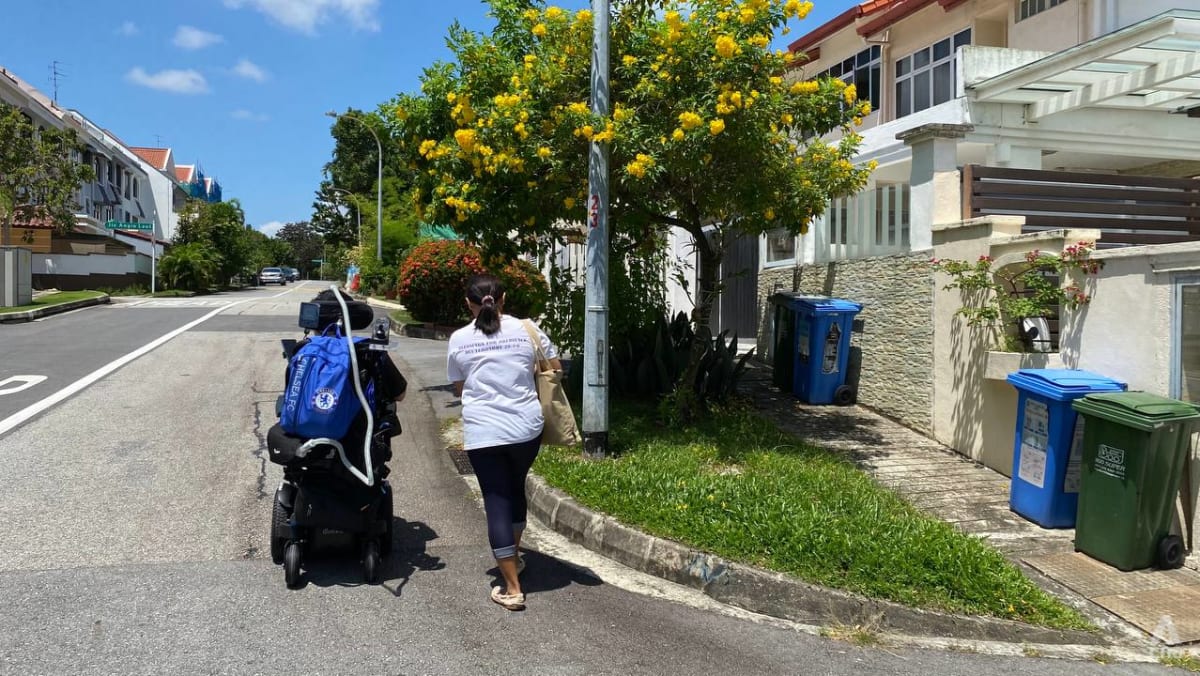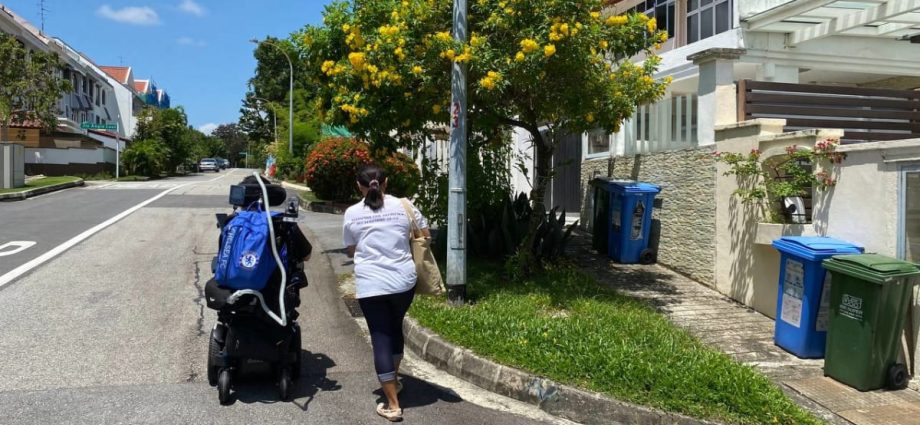
LACK OF ACCESSIBILITY INFORMATION
Mr Lim, who works as a community partnerships executive at K9Assistance, admitted he ventures out “more than most people with my condition” because he has a family car that is designed for his wheelchair.
He doesn’t take public transport as it is “too stressful and triggering”. The gap between the platform or pavement and the vehicle also “frightens” him.
Moreover, his housing estate poses “not so much of a concern” as there are no steps on his regular routes.
But many other wheelchair users may not be as fortunate. They face the key challenge of “a general lack of accessibility information”, making it difficult for them to plan their trip ahead of time, said Mr Alvin Tan, assistant director of independent living and caregiver support at SG Enable.
“Accessibility information could refer to the gradient of the path, the presence or absence of ramps and even the presence of trees with exposed roots along a route. Real-time road conditions such as roadworks, damaged pavements and shifted obstacles also affect wheelchair users, as they make a route temporarily inaccessible,” he told CNA.
“While non-wheelchair users can easily walk over or around obstacles, wheelchair users have more difficulty with these, and barrier-free accessible routes are essential for them.”
Needing to detour or find alternative routes is “time and energy-consuming”. And for motorised wheelchair users, their wheelchairs could run out of battery power before reaching their destination, added Mr Tan.
In wet weather, things can get even trickier as not all sheltered routes are accessible. Neither umbrellas nor ponchos offer full protection, he highlighted.
Slippery road surfaces are difficult for wheelchair users to navigate, and motorised wheelchair users could be subject to “rainwater seepage through the battery compartment of the wheelchair, causing costly repairs”.

